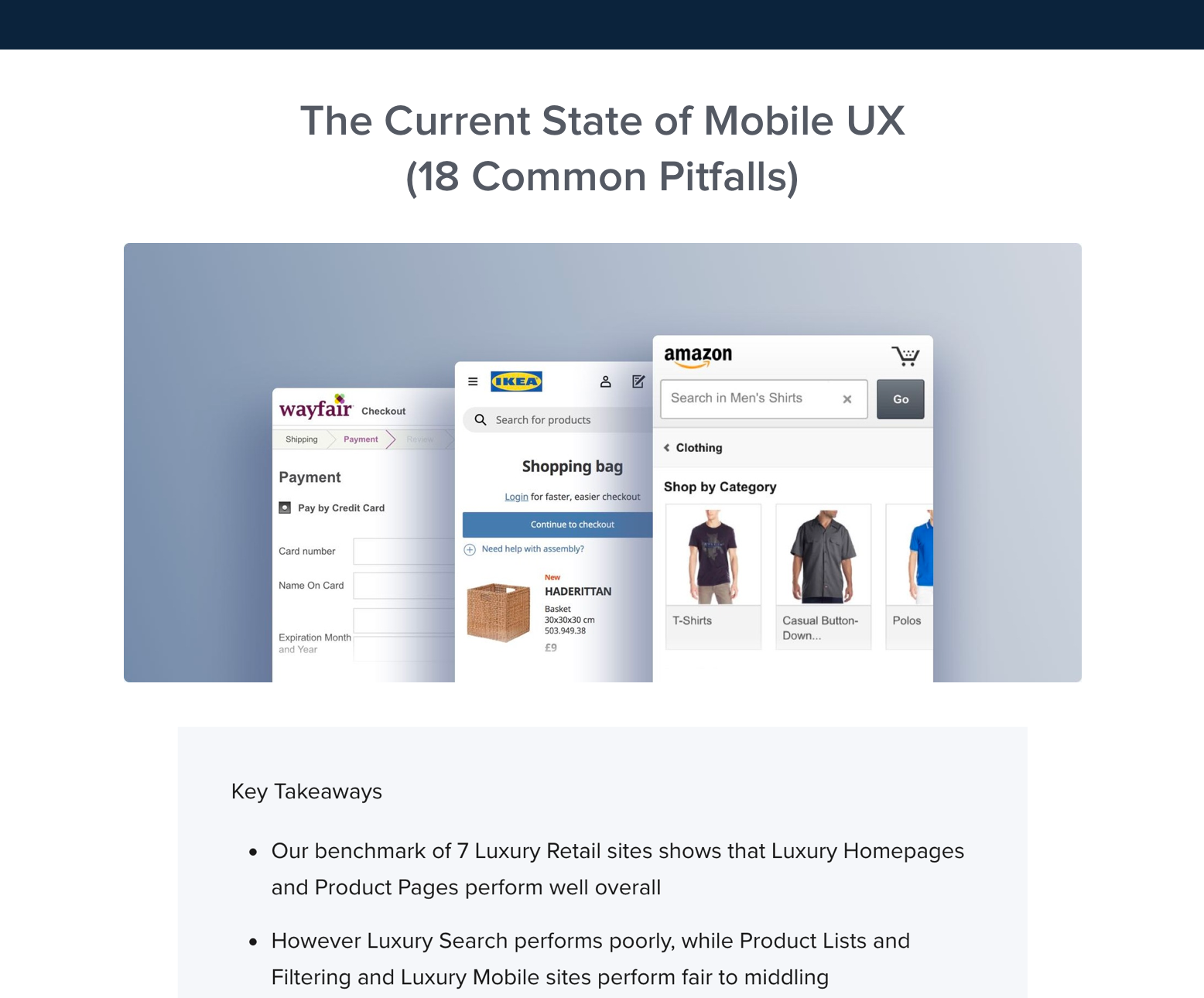Today we’re launching the world’s most comprehensive usability database on mobile e-commerce – and the majority of it is freely available.
The benchmark database includes reviews of 50 major mobile US e-commerce sites which have been manually reviewed across the 146 mobile usability guidelines in our M-Commerce report. It has taken the equivalent of roughly one man year to create this for the team of usability researchers here at Baymard, with more than 5,200 mobile site elements reviewed and scored.
Based on this massive dataset we now have detailed performance scores for 50 major mobile sites, giving us a good picture of the current state of m-commerce (insights we’ll be sharing in future articles). The benchmark also provides you with 678 categorized full-page screenshots of mobile page types (mobile cart, mobile product page, etc.). And all M-Commerce report owners get an additional 3,600+ examples of best (and worst) practice for mobile e-commerce implementations.
As with our four other benchmarks, you can (freely) explore this vast mobile dataset and see which US retailers have user-friendly sites (and which don’t).
Tip: besides browsing by mobile site reviews, you can also browse the 678 pages by mobile page type. For instance, if you’re looking for inspiration for your mobile product page design, you can take a look at the “51 Mobile Product Page examples”. There’s a total of 17 different page types you can browse.
Over the next months we’ll feature a series of articles on mobile e-commerce with in-depth analysis of this dataset, including the current state of mobile UX performance.
(If you’ve previously purchased the M-Commerce Usability report this benchmark addition is provided to you as a free upgrade. Simply sign in to your Baymard Pro account to begin browsing the benchmark scorecards and “best practice” examples.)

